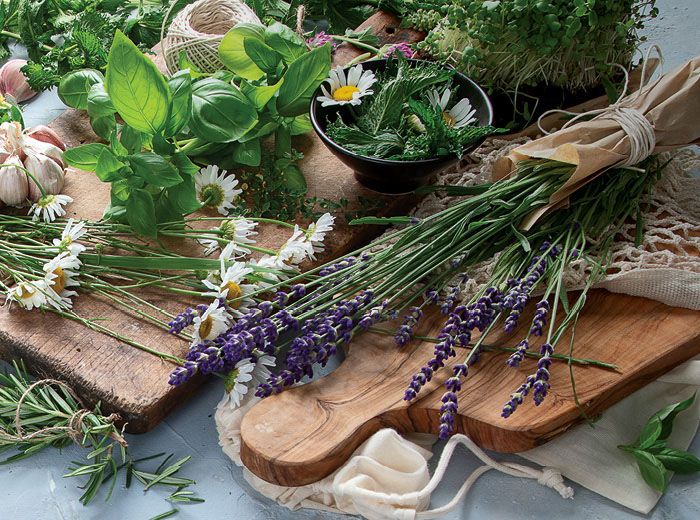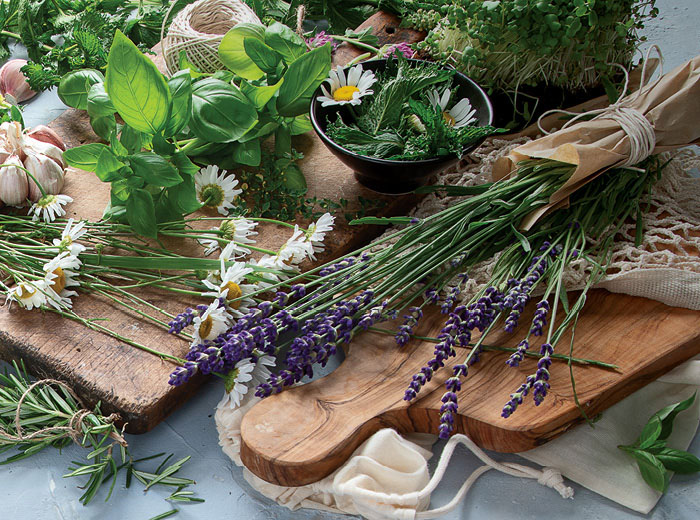A Matter of Taste
Ingredients Illustrated | APPLIED SCIENCE
Whether natural or artificial, flavor ingredients are always in season for food and beverage companies looking to pump up product taste profiles. The global food flavors market, estimated at nearly $17.2 billion in 2021, is expected to grow at a compound annual growth rate (CAGR) of about 4.8% from 2022 to 2030 to reach $26.3 billion, according to business research firm Precedence Research.
Artificial (synthetic) flavors still hold the largest market share at 59% in 2021, but the International Food Information Council reports that the number of shoppers who regularly purchase products labeled “natural” (39%) increased in 2022. And the global natural extract flavor market will notch an estimated 5.5% CAGR from 2022–2032, according to Future Market Insights, as demand for food products with natural flavors continues to expand, especially in Asia Pacific countries.
Beverage is overwhelmingly the biggest application segment for flavor ingredients, driven in part by the expansion of functional beverages. Almost two-thirds of consumers say they are now more likely to consider drinking functional beverages, according to a 2021 Datassential report. In turn, sales of liquid food flavors will likely outpace those of powdered food flavors from 2023–2033, projects Future Market Insights.
Fruit flavors are also ripe for growth, say industry experts, with the market expected to see a 9.3% CAGR from 2021–2028, according to Data Bridge Market Research.
“Citrus profiles, including traditional oranges, lemons, and limes, and emerging varietals like finger lime, calamansi, yuzu, kumquat, and blood orange, are bursting with flavor and opportunity,” says Jennifer Zhou, global director of product marketing, flavors, at ADM. “In fact, research shows that citrus remains one of the most classic flavor profiles, accounting for nearly 30% of new product launches [according to 2022 data from Mintel].”
Flavoring Glossary
Artificial flavor—any substance whose function is to impart flavor and that is not derived from a spice, fruit or fruit juice, vegetable or vegetable juice, edible yeast, herb, bark, bud, root, leaf or similar plant material, meat, fish, poultry, eggs, dairy products, or their fermentation products
Distillate—liquid extracted from a food product by heating and condensing vapor
Essential oil—volatile substance obtained by distilling or expressing plant material from a single botanical form and species
Flavor—entire range of sensations perceived when eating or drinking, including taste, smell, and physical traits experienced in the mouth
Flavor extract—solution that contains essential flavor components of a complex material, produced by pressing or extracting the source ingredient flavor into a liquid base, usually alcohol
Flavor palette—range of different flavor ingredients that impart different tastes, smells, and physical traits
Flavor profile—set of volatile compounds that render the characteristic taste and smell to an ingredient
Flavorist—specially trained scientist who designs flavor combinations
Masking compound—ingredients that can lessen or reduce the intensity of a particular flavor extract
Natural flavor—essential oil, oleoresin, essence or extractive, protein hydrolysate, distillate, or any product of roasting, heating, or enzymolysis, which contains the flavoring constituents derived from a spice, fruit or fruit juice, vegetable or vegetable juice, edible yeast, herb, bark, bud, root, leaf or similar plant material, meat, seafood, poultry, eggs, dairy products, or their fermentation products, whose significant function in food is flavoring rather than nutritional
Oleoresin—extract, typically from natural food or flavoring raw materials, that combines an essential oil and resin compounds
Sources: Flavor and Extract Manufacturers Association, Michigan State University, U.S. Food and Drug Administration
Not-So-Plain Vanilla
- The global market for vanilla—the world’s most popular flavor and the second-most expensive spice after saffron—is projected to hit nearly $2 billion by 2028, a compound annual growth rate (CAGR) of 4.5% from 2021, according to ResearchAndMarkets.com.
- Vanilla was the third-largest flavor across all food and beverage launches in 2022 (behind only chocolate and strawberry), reports Innova Market Insights, and vanilla-flavored alcoholic beverages are flying high at 43.8% CAGR for 2018–2022.
- Concerns about the cost and sustainability of natural vanilla are propelling efforts to manufacture more synthetic vanillin—the main component of vanilla extract—in environmentally friendly ways. Researchers at the University of Mainz in Germany, for example, recently developed a method to produce vanillin from recycled papermaking waste.
Botanical Flavors Shoot Up
Botanical flavors made from spices, herbs, flowers, and leaves are growing in popularity thanks to the thriving market for clean label and better-for-you foods. With a projected global market size of $9.6 billion by 2028, according to Fortune Business Insights, botanical extracts will see a compound annual growth rate of 9.6% from 2021–2028.
In the beverage category, botanicals already have jumped 31% in consumer interest in the past two years, reports food research firm Tastewise.
“We’re seeing an increased interest in [botanical] flavors that can be sourced to a specific region, such as Nigerian ginger and Japanese matcha tea,” says Fabio Catone, senior portfolio and strategy manager-extract and beverage at Sensient.
To view the full article with infographics , please download the pdf.






